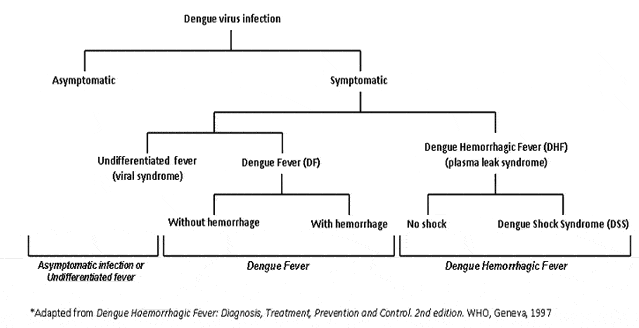We have to be careful of females because dengue is caused by female anopheles.hahaha.......Jokes apart!! Dengue is spreading in north India and all hospitals are full with dengue patients.There is a need to be aware about dengue and to make you people aware about dengue,here are some FAQs about dengue:
What is dengue fever?
Dengue fever is a disease caused by a family of viruses that are transmitted by mosquitoes. It is an acute illness of sudden onset that usually follows a benign course with symptoms such asheadache, fever, exhaustion, severe muscle and joint pain, lymphadenopathy, and rash. The presence of fever,rash, and headache and other pains)] is particularly characteristic of dengue. Other signs of dengue fever include bleeding gums, severe pain behind the eyes, and red palms and soles.
Dengue strikes people with low levels of immunity. Because it is caused by one of four serotypes of virus, it is possible to get dengue fever multiple times. However, an attack of dengue produces immunity for a lifetime to that particular serotype to which the patient was exposed.
How is dengue fever contracted?
The virus is contracted from the bite of a striped Aedes aegypti mosquito that has previously bitten an infected person. The mosquito flourishes during rainy seasons but can breed in water-filled flower pots, plastic bags, and cans year-round. One mosquito bite can inflict the disease.
The virus is not contagious and cannot be spread directly from person to person. There must be a person-to-mosquito-to-another-person pathway
What are dengue fever symptoms and signs?
After being bitten by a mosquito carrying the virus, the incubation period ranges from 3 to 15 days before the signs and symptoms of dengue appear. Dengue starts with chills, headache, pain upon moving the eyes, and low backache. Painful aching in the legs and joints occurs during the first hours of illness. The temperature rises quickly as high as 104 F (40 C), with relative low heart rate (bradycardia) and low blood pressure (hypotension). The eyes become reddened. A flushing or pale pink rash comes over the face and then disappears.
Fever and other signs of dengue last for two to four days, followed by a rapid drop in body temperature with profuse sweating. This precedes a period with normal temperature and a sense of well-being that lasts about a day. A second rapid rise in temperature follows. A characteristic rash appears along with the fever and spreads from the extremities to cover the entire body except the face. The palms and soles may be bright red and swollen.
What is the treatment for dengue fever?
Because dengue fever is caused by a virus, there is no specific medicine or antibiotic to treat it. For typical dengue, the treatment is purely concerned with relief of the symptoms (symptomatic). Rest and fluid intake for adequate hydration is important. Aspirin andnonsteroidal anti-inflammatory drugs should only be taken under a doctor's supervision because of the possibility of worsening hemorrhagic complications. Acetaminophen(Tylenol) and codeine may be given for severe headache and for the joint and muscle pain (myalgia).
What is dengue hemorrhagic fever?
Dengue hemorrhagic fever (DHF) is a specific syndrome that tends to affect children under 10 years of age. It causes abdominal pain,hemorrhage (bleeding), and circulatory collapse (shock). DHF is also called Philippine, Thai, or Southeast Asian hemorrhagic fever and dengue shock syndrome.
DHF starts abruptly with high continuous fever and headache. There are respiratory and intestinal symptoms with sore throat, cough,nausea, vomiting, and abdominal pain. Shock occurs two to six days after the start of symptoms with sudden collapse, cool, clammy extremities (the trunk is often warm), weak pulse, and blueness around the mouth (circumoral cyanosis).
In DHF, there is bleeding with easy bruising, blood spots in the skin (petechiae), spitting up blood (hematemesis), blood in the stool (melena), bleeding gums, and nosebleeds(epistaxis). Pneumonia is common, and inflammation of the heart (myocarditis) may be present.
Patients with DHF must be monitored closely for the first few days since shock may occur or recur precipitously (dengue shock syndrome). Cyanotic (bluish) patients are given oxygen. Vascular collapse (shock) requires immediate fluid replacement. Blood transfusions may be needed to control bleeding.
The mortality (death) rate with DHF is significant. It ranges from 6%-30%. Most deaths occur in children. Infants under a year of age are especially at risk of dying from DHF.
| Is there an effective treatment for dengue hemorrhagic fever (DHF)? |
As with dengue, there is no specific medication for DHF. It can however be effectively treated by fluid replacement therapy if an early clinical diagnosis is made. Hospitalisation is frequently required in order to adequately manage DHF. |
What can be done to reduce the risk of acquiring dengue? |
There is no vaccine for preventing dengue. The best preventive measure for residents living in areas infested with Aedes aegypti is to eliminate the places where the mosquito lays her eggs, primarily artificial containers that hold water. Items that collect rainwater or are used to store water (for example, plastic containers, big drums, buckets, or used automobile tires) should be covered or properly discarded. Pet and animal watering containers and vases with fresh flowers should be emptied and scoured at least once a week. This will eliminate the mosquito eggs and larvae and reduce the number of mosquitoes present in these areas. Tests for Dengue
How can dengue fever be diagnosed? The diagnosis of dengue is usually made clinically. The classic picture is high fever with no localising source of infection, a rash with thrombocytopenia and relative leukopenia - lowplatelet and white blood cell count. Dengue infection can affect many organs and thus may present unusually as liver dysfunction, renal impairment, meningo-encephalitis or gastroenteritis.
Dengue shock syndrome is defined as dengue hemorrhagic fever plus which is the worst stage of dengue has symptoms,such as:
|





No comments:
Post a Comment